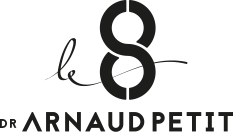Aesthetic medicine
Every year, more and more people are resorting to aesthetic medicine. This includes all procedures whose purpose is to modify a person’s physical appearance in order to improve it, using non-invasive techniques, which differ from cosmetic surgery. Aesthetic medicine can, for example, be used to treat wrinkles, pigment spots, marginal volume loss due to facial ageing, etc.
Hyaluronic Acid or Botox injections are the most commonly used aesthetic medical procedures.

Aesthetic medicine procedures :
What are the indications for aesthetic medicine?
Aesthetic medicine is for people who wish to:
- Treat facial wrinkles (glabella lines, crow’s feet, bitterness folds…).
- Raise and reshape their eyebrows and temples, or even treat their hollow dark circles.
- Redefine the oval shape of their face.
- Redefine the contours of their mouth or raise the corner of their lips.
- Treat a gummy smile or reduce neck wrinkles.
There are various products that can provide effective treatment of facial wrinkles. At my practice, I employ three different techniques that we can review together depending on the area to be treated and your needs.
Botox injections
Botox, or botulinum toxin, has been used in aesthetic medicine since the 1980s, however, it has only been authorized in France since 2003. This toxin relaxes the muscles and makes it possible to treat pathologies such as blepharospasm.
The injection of botox blocks the production of acetylcholine leading to paralysis of the muscles controlling the face. This controlled paralysis will thus make it possible to obtain natural and effective results. In general, Botox is mainly used to reduce wrinkles in the forehead, around the eyes or on the eyebrows.
The results of a session are visible immediately after the injections. However, the toxin will not be fully assimilated by the body until two or three weeks after the injection. Botox will therefore only have the desired effect later on.
Hyaluronic acid injections
Hyaluronic acid is naturally present in the body and also helps to fill in wrinkles. Indeed, it is responsible for maintaining skin tone and is found in the eye, on the surface of the dermis and even in the cartilage.
Over time, hyaluronic acid production decreases, causing skin dehydration. Hyaluronic acid injections thus make it possible to capture water on the surface of the dermis and to give your skin a renewed tonality. The injection of hyaluronic acid is very effective for the treatment of nasolabial folds, bitterness folds and to restore volume to lips and cheekbones.
The effects of hyaluronic acid last between 6 and 18 months depending on the area treated. Since it is made up of biodegradable molecules, it will be necessary to have new injections once a year.


